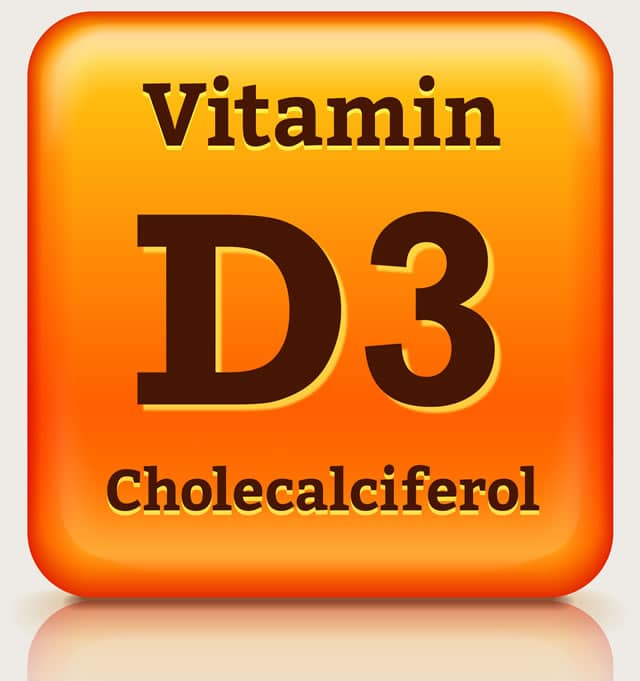Bone, Knee & Joint, Weight Management
Calcium – Vitamin D3: Benefits, Dosage, Relationship & Synthetic Sources
Isn’t it surprising that a large number of the population — up to 90% of adults in the world — are considered to have a calcium and vitamin D3 deficiency? Many doctors have started to take this deficiency very seriously; in fact, calcium and vitamin D3 is one of the most suggested supplements by physicians today to cure and prevent calcium and vitamin D3 deficiency symptoms. Most of the adults are believed to be deficient in calcium and vitamin D3. However, people with dark skin, people who live in a few particular regions of the world where less year-round sun exposure is experienced and those who are overweight have a higher chance of experiencing these deficiency symptoms.  As the population of overweight and also obese adults and children has increased steadily over the past number of decades, so has the number of calcium and vitamin D3 deficiency cases. Sadly, this deficiency is correlated with increased risks of developing common cancers, kidney problems, autoimmune diseases, hypertension and also various infectious diseases, too. A 2017 study recently revealed that occupation could also play a significant role in calcium and vitamin D3 levels. Researchers found that shift-workers, health care workers and indoor workers are at high risk of developing the deficiency due to reduced outdoor time and sunlight exposure. Luckily, there are ways you can naturally enhance your calcium and vitamin D3 levels and decrease your risk of expanding health conditions like heart disease, cancer, diabetes and also other deficiency signs and symptoms. Spending time in the sun, without the sunscreen, is your surest way to get adequate vitamin D3, and eating calcium-rich foods also helps improve your calcium levels. Read on to understand a lot of information about the same. Without a doubt, calcium and vitamin D3 are the essential micronutrients when it comes to your overall health. It’s implicated in just about everything, from immunity to the brain function, and some researchers are still daily proving in new ways that vitamin D3 affects your well-being. However, with a limited selection of these foods available and a vast portion of the population at risk for the aforesaid deficiency, many people simply aren’t getting enough of this vital vitamin to be able to meet their needs excellently. Yes, vitamin D3 deficiency is genuine and can affect your health.
As the population of overweight and also obese adults and children has increased steadily over the past number of decades, so has the number of calcium and vitamin D3 deficiency cases. Sadly, this deficiency is correlated with increased risks of developing common cancers, kidney problems, autoimmune diseases, hypertension and also various infectious diseases, too. A 2017 study recently revealed that occupation could also play a significant role in calcium and vitamin D3 levels. Researchers found that shift-workers, health care workers and indoor workers are at high risk of developing the deficiency due to reduced outdoor time and sunlight exposure. Luckily, there are ways you can naturally enhance your calcium and vitamin D3 levels and decrease your risk of expanding health conditions like heart disease, cancer, diabetes and also other deficiency signs and symptoms. Spending time in the sun, without the sunscreen, is your surest way to get adequate vitamin D3, and eating calcium-rich foods also helps improve your calcium levels. Read on to understand a lot of information about the same. Without a doubt, calcium and vitamin D3 are the essential micronutrients when it comes to your overall health. It’s implicated in just about everything, from immunity to the brain function, and some researchers are still daily proving in new ways that vitamin D3 affects your well-being. However, with a limited selection of these foods available and a vast portion of the population at risk for the aforesaid deficiency, many people simply aren’t getting enough of this vital vitamin to be able to meet their needs excellently. Yes, vitamin D3 deficiency is genuine and can affect your health.  Fortunately, incorporating a good variety of calcium and vitamin D3 rich foods into your diet can cut the risk of deficiency and help optimize your health. So what foods are high in this and why does it even matter? Let’s dive in and discuss why you may want to start paying closer attention to your dietary intake of this incredibly essential vitamin. (you will see in below links).
Fortunately, incorporating a good variety of calcium and vitamin D3 rich foods into your diet can cut the risk of deficiency and help optimize your health. So what foods are high in this and why does it even matter? Let’s dive in and discuss why you may want to start paying closer attention to your dietary intake of this incredibly essential vitamin. (you will see in below links).
Know The History Of Calcium
 Calcium is nature’s most important structural material. Indeed, calcium is a crucial component of all living things and is also abundant in many non-living things, particularly those that help support life, such as soil and water. Teeth, seashells, bones and also cave stalactites are all products of calcium. Interestingly, calcium seems to be in fifth place wherever it goes: It is the 5th most abundant element by mass in the Earth’s crust (after oxygen, silicon, aluminum and iron); The fifth most abundant deliquesce ion in seawater (after sodium, chloride, magnesium and also sulfate); and the fifth most abundant element in the whole human body (after oxygen, carbon, hydrogen, and nitrogen). It is, however, the most plentiful metallic element in the human body, 99 percent of which can be seen in our bones and also in teeth (about 2 lbs. of it!), according to a famous health institute. In its unalloyed elemental state, calcium is a soft, silvery-white alkaline earth metal. It is necessary to note, however, that calcium is never found in this isolated state in nature, but endures instead in compounds. Calcium compounds can be obtained in a variety of minerals, including limestone (Calcium carbonate), gypsum (Calcium sulfate) and fluorite (Calcium fluoride), according to Chemicool. Calcium makes up about 4.2 percent of the Earth’s crust by weight. To separate pure calcium, it must be extracted through electrolysis, a technique that utilizes a direct electrical current to different elements from their naturally occurring sources. Once isolated, calcium is quite more reactive and will form a greyish-white oxide and nitride coating when exposed to air. In 1808, Cornish chemist and also an inventor Sir Humphry Davy was the first ever person to isolate calcium successfully. A few other scientists, Magnus Pontin, and Jöns Jacob Berzelius had come close; they had been able to make a calcium amalgam after performing electrolysis on a mixture of lime and mercury oxide. This time, Davy repeated their electrolysis method on the same calcium amalgam, but he added more lime to the mixture, producing more of the amalgam from which he was able to distill away the mercury, leaving only calcium, according to the royal society of chemistry. Once calcium had been successfully secluded, the element was able to be studied further, revealing its significance for the survival of all living things. Did you know that calcium accounts for around 1.5 to 2 percent of your body weight? This indispensable mineral is perhaps best recognized to strengthen bones, teeth, the heart, and slash your risk of enlarging many diseases. On the contrary, a calcium deficiency can head to common conditions like hypertension, seizures, and many more. Possibly one of the fascinating realizations is that the history and science behind calcium are often little-discussed despite the highly interesting and useful nature of the information. From the vast uses of calcium for enlarging your total body health to the scientific characteristics of the mineral that pave the way for its advantages, above are few facts about calcium you may have never heard.
Calcium is nature’s most important structural material. Indeed, calcium is a crucial component of all living things and is also abundant in many non-living things, particularly those that help support life, such as soil and water. Teeth, seashells, bones and also cave stalactites are all products of calcium. Interestingly, calcium seems to be in fifth place wherever it goes: It is the 5th most abundant element by mass in the Earth’s crust (after oxygen, silicon, aluminum and iron); The fifth most abundant deliquesce ion in seawater (after sodium, chloride, magnesium and also sulfate); and the fifth most abundant element in the whole human body (after oxygen, carbon, hydrogen, and nitrogen). It is, however, the most plentiful metallic element in the human body, 99 percent of which can be seen in our bones and also in teeth (about 2 lbs. of it!), according to a famous health institute. In its unalloyed elemental state, calcium is a soft, silvery-white alkaline earth metal. It is necessary to note, however, that calcium is never found in this isolated state in nature, but endures instead in compounds. Calcium compounds can be obtained in a variety of minerals, including limestone (Calcium carbonate), gypsum (Calcium sulfate) and fluorite (Calcium fluoride), according to Chemicool. Calcium makes up about 4.2 percent of the Earth’s crust by weight. To separate pure calcium, it must be extracted through electrolysis, a technique that utilizes a direct electrical current to different elements from their naturally occurring sources. Once isolated, calcium is quite more reactive and will form a greyish-white oxide and nitride coating when exposed to air. In 1808, Cornish chemist and also an inventor Sir Humphry Davy was the first ever person to isolate calcium successfully. A few other scientists, Magnus Pontin, and Jöns Jacob Berzelius had come close; they had been able to make a calcium amalgam after performing electrolysis on a mixture of lime and mercury oxide. This time, Davy repeated their electrolysis method on the same calcium amalgam, but he added more lime to the mixture, producing more of the amalgam from which he was able to distill away the mercury, leaving only calcium, according to the royal society of chemistry. Once calcium had been successfully secluded, the element was able to be studied further, revealing its significance for the survival of all living things. Did you know that calcium accounts for around 1.5 to 2 percent of your body weight? This indispensable mineral is perhaps best recognized to strengthen bones, teeth, the heart, and slash your risk of enlarging many diseases. On the contrary, a calcium deficiency can head to common conditions like hypertension, seizures, and many more. Possibly one of the fascinating realizations is that the history and science behind calcium are often little-discussed despite the highly interesting and useful nature of the information. From the vast uses of calcium for enlarging your total body health to the scientific characteristics of the mineral that pave the way for its advantages, above are few facts about calcium you may have never heard.
History Of Vitamin D3
The discovery of rickets came much advanced than the discovery of Vitamin D3. By studying and researching the disease for 100’s of years, scientists ultimately invented its preventative treatment, Vitamin D3. Here below is the information timeline that describes how Vitamin D3 came about.
- 1600s: The term ‘rickets’ had not been coined yet, but two scientists named Whistler and Glisson had individually researched and published a scientific paper describing the disease. Neither of these reports touched on preventative methods, such as diet or sun exposure.
- 1936: Vitamin D3 was established as being produced in the skin as a result of exposure to ultraviolet (UV) rays.
- 1936: Windaus recognized vitamin D3 as the specific factor in cod liver oil that was responsible for preventing rickets.
- 1930s: Number of food items in India were fortified with Vitamin D3.
- 2010: Although many famous health organizations around the world have already confirmed their guidelines for Vitamin D3 daily consumption, there are often inconsistencies. The Institute of Medicine (IOM), a committee of experts tasked to review Vitamin D3 research, confirmed daily intake recommendations for both Vitamin D3 and calcium for various population groups.
Vitamin D3 continues to be a central main component in many scientific research protocols!
Key Roles Of Calcium And Vitamin D3
When an individual thinks of calcium, bone health is the first thing that comes to their mind, but calcium’s benefits go far beyond aiding to build and maintain a healthy skeletal structure. Calcium is also required to regulate heart rhythms, aid in muscle function, control blood pressure and cholesterol levels, and is involved in many nerve signaling functions, and also much more. New research conducted in 2017 is also now suggesting that calcium, in combination with vitamin D3, may have the capacity to ease protect against cancer, diabetes and heart disease too—three of the biggest threats to Indian’s health and the health of many other nations also. Calcium is the most present mineral in the human body, stored in the body mostly in the bones and teeth. About 99% of the calcium is found in bones and the teeth, mainly in the form of calcium deposits, with the other enduring 1% being stored throughout the bodily tissue. Humans need a relatively large amount of calcium in comparison to many other trace minerals—in fact, you are thought to have adequate calcium in your body to constitute 2% of your total body weight. Calcium is also required to control levels of magnesium, phosphorus, and potassium in the blood since these minerals all work jointly to balance one another. This is why it is so significant to avoid calcium deficiency and strive to absorb calcium-rich foods on a daily basis. Aside from dairy products like milk, calcium can be seen in particular plant foods as well. Leafy green vegetables, like collard greens and also kale, are best sources of calcium, as are other plant foods like okra and a variable number of beans. NOTE: It is essential to note that magnesium is the primary key to calcium absorption. These two work in an extraordinary relationship with each other in the whole body. Many times, if you have a calcium deficiency or calcium imbalance, then you also may have a magnesium deficiency — and frequently a magnesium deficiency can be a predecessor to the later calcium issues, because of this influence on calcium uptake! This relationship is why calcium food origins are the most effective when consumed with magnesium-rich foods.
Concerns With Calcium And Vitamin D3
There has been a lot of dissension surrounding how much calcium and vitamin D3 people really should obtain in latest years, especially when it comes to the potential negative effects of calcium supplements. While various experts have differing opinions in terms of calcium supplementation, what most agree on is that getting calcium from a healthy diet should be your main priority. The human body assimilates calcium from food sources better than it does from supplements and it’s much less likely that you’d reach very large, harmful levels of calcium from food sources alone. More studies are still needed, but few researchers have become concerned in latest years that there may be a link between high levels of calcium (mostly from the supplements) and heart disease. There’s potential for calcium to form fatty plaque build-up in arteries and to add to the hardening and stiffening of arteries, which is a dangerous heart condition known as atherosclerosis. This can potentially head to heart attacks or strokes, but again nothing is conclusive at this point since studies have shown mixed results. Other controversies surrounding calcium are related to potential risks for cancer, including breast and prostate cancer. Studies exploring cancer and also calcium has also been mixed, with some showing negative correlations, with some showing positive connections, and some showing that calcium does not affect cancer levels. Because much is still unknown, it’s not suggested that most people take calcium supplements regularly, especially not large doses, without talking to a doctor first to weigh the pros and cons. Although you require plenty of Vitamin D3 when consuming calcium, at the same time, there is too much of a good thing. Calcium and vitamin D3 taken in very high amounts can be problematic since vitamin D3 increases the effects of calcium. Like with all nutrients, it’s never the best idea to get much more than you require. In this case, very large levels of calcium can combine with drugs designed to treat heart disease, diabetes, epilepsy, and also other conditions. Calcium can also enhance risk for kidney stones when taken in large amounts and can conflict with the absorption of other essential minerals, like iron, magnesium and zinc. Calcium is an essential mineral that you may not be getting enough. While dairy products tend to pack the highest amounts of this mineral, plenty of other good sources exist — many of which are plant-based. If you have difficulty consuming such foods rich in calcium, you might require to consider a calcium supplement, especially if you are at risk of developing few bone disorders. It’s a good idea to discuss this with your doctor or other registered healthcare professional. It is much better to get calcium from supplements which are also considered as an easy way (which also provide other nutrients).
What Is Calcium And Vitamin D3 Good For?
This article talks about in detail what is calcium D3 and the respective age groups which require the calcium D3 and why you should know about the minimum and maximum dosage for each age.
Top 4 Benefits of Calcium with Vitamin D3 Supplement (60 Tablets)
This mentioned link will provide you with important information about the benefits of calcium D3.
What Is The Relationship Between Vitamin D3 & Calcium?
This article link will take to you understand the relationship between calcium and D3, why should they be consumed together?, precautions to be taken while consuming calcium D3 and food sources of calcium.
What Are The Different Synthetic Sources of Calcium And Vitamin D3?
Beside mentioned link talks about synthetic sources, pros and cons and side effects of calcium D3. https://www.webmd.com/drugs/2/drug-93165/calcium-vitamin-d3-oral/details https://info.dralexrinehart.com/articles/vitamin-d-and-vitamin-k2-benefits-connection


